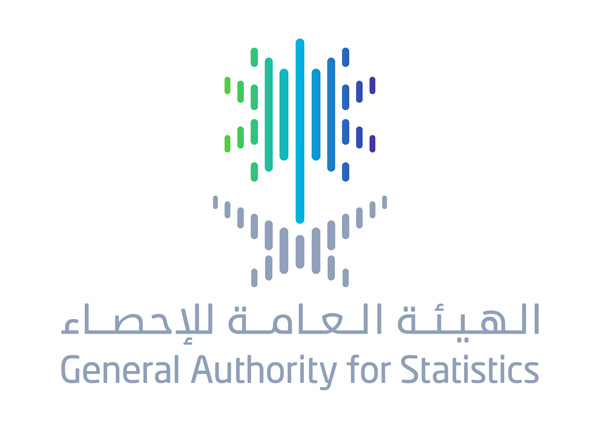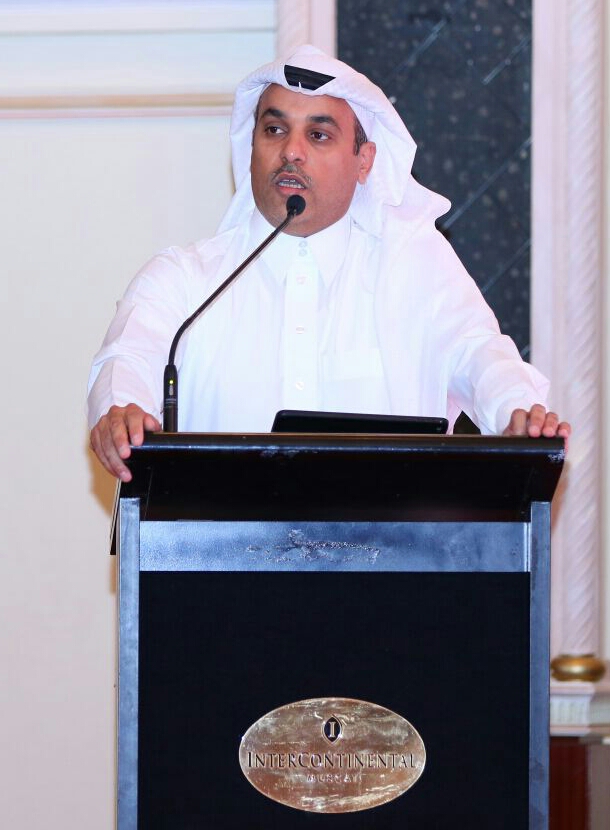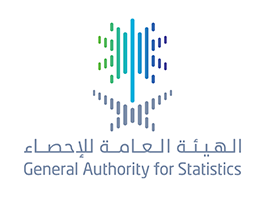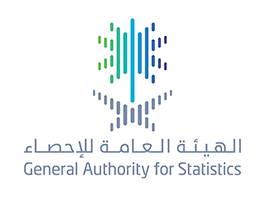
" الإحصاء " : دقَّة المعلومات التي يُقدِمُها المواطن ركيزة أساسية لقرارات ومشاريع حكومية
Updating the general framework of population and housing paves the way for a new labor force survey
"statistics" the accurate information provided by citizens is essential for governmental resolutions and projects
Media center- Riyadh
Supporting the resolutions of nationalization and reduction of "unemployment", the General Authority for Statistics ( GaStat ) stresses the importance of information accuracy provided by citizens in the activities of labor force surveys as these information are essential for the development resolutions and can determine many national programs and projects.
During his participation in the first Saudi conference for job creation held in Riyadh, GaStat chairman, dr. Fahad Altukhaifi stated that the citizen is considered the base for development building , that is through the information that he/she provides during the process of conducting surveys done by GaStat crew.
As for the survey of labor force, dr. Fahad confirmed that it is one of the most important household surveys conducted by GaStat . it provides fundamental data about the labor force and its characteristics, which helps in setting the plans to develop the labor market in Saudi Arabia, analyzing and evaluating the economic policies, and helping the decision makers in setting the labor market policies with all the related issues such as unemployment and training. The labor force survey results are very important too as they collaborate in building a data base for the Saudi labor market in order to cope with the interest and anticipations of the labor force statistics nationally, regionally, and internationally. The results also support all tendencies and efforts exerted by the public and private sectors in the process of nationalization. Moreover, they give an opportunity to collaborate in building a base for these information that can be beneficial in preparing and planning the future economic and social development programs. The authority conducts this survey every six months , it intends to conduct it every three months in 2016 according to the latest international standards and methodologies.
The authority chairman added that providing detailed data about the national and non-national labor force ,classified by their economic, social, and demographic characteristics, is one of the main objectives of the survey, in addition to its role in measuring the averages of economic collaboration, economic support, and employment and unemployment by many variables. It should also provide data about some training programs for job seekers, and be familiar with the vocational structure and the economic activity of employed people by a number of variables and the average of their salaries.
Dr. Altukhaifi thanked all governmental entities who work with GaStat . he assured that the authority is working with all governmental entities which are related to the Saudi labor market ( ministry of labor, human resources development fund, general organization for social insurance, ministry of civil services, and the national information center in the ministry of interior) in order to develop the survey on one hand and benefit from its results on the other hand. The authority is working with them also to unify the efforts so that they can get accurate data of the most important indicators in the Saudi labor market.
It is worth mentioning that the labor force survey results depend on the data and information of (33.500) households, distributed among all Saudi administrative regions, as a sample that represents the society. The households are chosen according to international and scientific fundamentals applicable in the population and housing censuses all over the world . GaStat has started preparing for the next survey after updating the general framework of population and housing which depends on the 1431 framework as it is considered the main source from which samples are collected to conduct future researches.

د. التخيفي : الإحصاء يدعم قرارات من شأنها الحد من ظاهرة ارتفاع الأسعار
The GCC Statistical Centre Launches the General Consumer Prices Index
In pursuit of the Gulf Cooperation Council (GCC) countries to find a number of coordinating and corrective procedural policies that will help in reducing the phenomenon of rising prices in the GCC countries, the GCC Statistical Centre launched the project of "GCC Consumer prices index", and "the statistical centre data portal" in Muscat, Oman, under the auspices of His Excellency Sheikh Khalid Almarhoon, the Minister of Civil services in Oman.
The chairman of the General Authority for statistics in Saudi Arabia, the chairman of the GCC Statistical center in its current cycle, Dr. Fahad bin Sulaiman Altekhaifi, asserted that the index number is considered to be an important tool to support decision makers in all private and public sector entities in GCC countries to prepare coordinating and corrective procedural policies that contributes in reducing the phenomenon of rising prices in the GCC countries. It is also considered to be an economic phenomenon with social dimensions. In addition, the new indicator will provide a unified prices statics data base with all its details, which will help the beneficiaries to use the information in various related fields.
Talking about the statistical centre data portal, Dr. Altekhaifi added that the goal of inaugurating the portal is to enable the observation of statistical data and documenting achieved advancements in the indicators of the GCC countries in different economic, social, and energy sectors. In addition, its goal is to provide information services that contributes in raising statistical awareness.
On the other hand, in the speech of Dr. Altekhaifi, he asserted on developing and supporting the statistical and institutional abilities, to keep pace with the statistical requirements on the GCC countries' level and internationally. He also asserted that this is one of the most important common goals on the strategic level of the GCC countries. He also added that the authorities and Gulf statistical centers are seeking to continuously reinforce and enhance the quality and quantity of statistical services, and develop, expand and market the statistical publishing. Also, it seeks to show the GCC countries' region as a unified social and economic region through unifying the national statistical strategies in the GCC countries with the combined statistical programs needs according to the best international practices. Altekhaifi also explained that everyone is working on building statistical culture and raising statistical awareness, in addition to reinforcing the actual and correct use of statistical data and information in decision making and policy making in GCC countries.
Altekhaifi also revealed about ten of the most important projects that are considered to be the top statistical priority determined by the GCC statistical centre, which are: the national accounts, environment and energy, financial executive statistics, balance of payments, development, progress and sustainability indicators, short term prices and indicators, unified registered population census (year of 2020), foreign trade, administrative data, job market, and the statistical standards, categories, methodologies, and data quality.
It is worth mentioning that the GCC statistical centre was established in September 2011, and its organization was approved in 2012 by the supreme council of the GCC to be the official source of statistical information and data related to GCC countries. It was also established to reinforce statistical and informational work of the national statistical centers and planning in GCC.
وزير الاقتصاد يُدشن عمل الهيئة العامة للإحصاء وبوابتها الإلكترونية...هيئة الإحصاء توقع 4 اتفاقيات مع جهات حكومية وخاصة
Minister of economy launches the general authority for statistics and its electronic portal
The authority of statistics signs 4 agreements with private and public sectors
Media center- Riyadh
Minister of economy and planning, chairman of the general authority for statistics, Eng. Adel bin Mohammed Faqeeh, launched the first day of working in the statistical field with a new structure and identity. This was an implementation of the supreme decree issued on 26-12-1536 H which states transforming the central department of statistics to be a general authority called ( the general authority for statistics). The authority is financially and administratively independent. In his speech that was declared in the launching event which was held in Marriot hotel, the minister expressed his gratitude and thanks to the custodian of the two holly mosques, king Salman bin Abdulaziz Alsaud, may God protect him, for his approval to transform the central department of statistics to be an independent authority. He confirmed that the work will start officially in the general authority for statistics as a result of many supreme directives, orders, and resolutions that support and enhance a lot of governmental sectors by transforming them into independent authorities that provide services compatible with the rapid changes and developments.
On his part, the authority's general director, dr. Fahad bin Sulaiman Altukhaifi, in his name and on behalf of all the staff of the central department of statistics , and all those who work in the statistical sector , he expressed his gratitude and thanks to the custodian of the two holy mosques for his supreme approval to transform the central department of statistics to a general authority. Dr.Fahad said that this transformation process has been done through six fundamental tracks which can be briefed in a working strategy that is all about the authority’s clients and partners to fulfill the actual need of statistical products, then developing these products and services and improving statistical and data methodologies and procedures. In addition, it focuses on upgrading the level of information technologies and digital infrastructure in order to give the products the ability to start from a very tough base that can cope with all technological changes. It also concentrate on raising awareness and literacy in the statistical field, and finally structuring the authority’s different tasks and departments. He assured that the general authority for statistics’ role has become more important as long as there are national transformation projects as it is very crucial to provide accurate statistical data and effective indicators besides developing the measurement tools.
On the first working day and after the transformation process, the authority’s general director has announced that the first of Muharram of the next year will be the day in which the information bank will be issued. This bank is one of the statistical development national strategy’ aspects, which aim to organize statistical data and information in Saudi Arabia, to guarantee providing the governmental sectors and individuals with statistical information and indicators through an easy and accurate technique. This is to support the development decisions via collaborative system, which starts with electronic linking between all data resources in many related sectors. Furthermore, minister of economy and planning Eng. Adel bin Mohammed Faqeeh has launched the electronic portal of the general authority for statistics. In this portal, the users can get all the needed information in very easy and direct ways through many windows and according to the international statistical and technical standards. On the first working day, four agreements have been signed with different private and public sectors. The authority has signed two agreements with the national information center in the interior ministry and e-government program (yesser). These agreements have been signed to develop the techniques of collecting, exchanging, and integrating data. The third agreement has been signed with the national center for communication, aiming to develop the mechanisms of communication with disabled people. It also aims to provide statistical content in sign language. On the other hand, the central department of statistics and information ex-directors and retired employees were honored.
After the launching event, the authority held an introducing workshop with many partners from both the private and public sectors. This workshop aimed to introduce the authority and its roles. The participants watched a detailed presentation about the products and services in addition to the interactive statistics window and a brief of the statistical awareness. The minister of economy and planning revealed that the statistical sector partnership with the private and public sectors will open many opportunities for the statistical sector to be constantly developed and improved in order to be able to effectively collaborate in supporting any developmental decision taken by any private or public sector in all fields of national development. It is worth mentioning that the ministers’ council resolution issued on 13/1/1437 H included the approval of general authority for statistics structure, and made it the only authorized entity that technically and structurally supervise the statistics sector. It also made it the only responsible authority for creating thorough national statistical databases in different fields. Moreover, it made it the only responsible entity for managing the authority affairs and creating its own board of directors

ستة مسارات عملتْ عليها "الإحصاء" خلال 90 يوم.. أربعة أيام ويبدأ القطاع الإحصائي نقلته الجديدة
"Statistics" worked on six tracks in 90 days
Four Days and the Statistical Sector will Start a New Era
Media Center
The Saudi statistical data and information sector is starting a new era after declaring the changing of the central department of statistics to be an authority named" the general authority for statistics". This transforming will start officially on Wednesday 1st of jamad first.
Director of media and statistical awareness department and the spokesman of the authority, Taiseer Almufarij states that working under the umbrella of the general authority for statistics is considered an implementation of the supreme decree number ( 64283) in 26/12/1436 H which declares transforming the central department of statistics to be a general authority called the general authority for statistics. This authority is financially and administratively independent. The supreme decree gave ninety days for the transforming process. The countdown is about to finish now and this Wednesday will be the first official day to work under the new name. Almufarij confirmed that this transforming is not only about changing the name or identity, but changing content, techniques, and mechanisms as the statistical sector must cope with all the rapid changes around it otherwise it cannot go farther. With the increase of commercial transactions, international investments, social and economic changes, mass data revolution , and the development of digital media and portable technologies, it has been a need for the statistical work to go through a vital transforming process in order to satisfy the clients and fulfill their needs which require the authority to establish a mutual partnerships, estimate their current and future needs, unify the information sources, facilitate access to this sources, and provide more advanced statistical products.
Almufarij said that the general authority for statistics is undergoing a transforming plan that has six major tracks: concentration on the client strategy, developing products and services, enhancing methodologies and procedures, upgrading information technologies and infrastructure, statistical literacy and building competences, and structuring all the authority's different tasks and departments in order to keep developing the authority and making it a distinct institution.
It is worth mentioning that the Saudi statistical work has started in a very early era of the Saudi development history. It has started in 1349H /1930 AD and continued for thirty years till the issuance of the general statistics system in royal decree number (23) which made the statistical work a sector that refers technically and administratively back to an official system that cooperated in organizing the statistical sector by setting the rules of relation between the central department as it is the only central department for statistics and the other sectors. This system aimed to activate the statistical work and make it more comprehensive, and raise statistical awareness. During the last fifty eight years, the department worked on many surveys, censuses, and indicators in many different fields in Saudi Arabia.

د. التخيفي : كلمة الملك سلمان رسمتْ خطوط الإدارة الجديدة للتنمية

مدير المصلحة: تحويل الاحصاءات الى هيئة يصنع شراكات فاعلة

الهيئة العامة للإحصاء : ارتفاع الصادرات وانخفاض الواردات السلعية للمملكة العربية السعودية في الربع الأول 2017
GaStat: An Increase in Exports and a Decrease in Merchandise Imports of Saudi Arabia (1st quarter-2017)
The value of merchandise exports of Saudi Arabia during the first quarter of 2017 amounted to (206984) million riyals compared to (140186) million riyals for the same quarter last year, with an increase of (66799) million riyals (47.7%). While non-oil exports amounted to (44849) million riyals during the first quarter of 2017 compared to (43029) million riyals for the same period last year, with an increase of (1820) million riyals (4.2%). The value of Saudi Arabia's imports during the first quarter decreased by (12.3%) to reach (125558) million riyals with a decrease of (17542) million riyals compared to same quarter last year which recorded (143100) million riyals.
According to the quarterly report issued by GaStat for the first quarter of 2017, the value of Saudi merchandise exports recorded an increase of (5.2%) compared to the last quarter (4th quarter 2016) which recorded (196842) million riyals. While non-oil exports recorded a decrease of (4.5%)compared to the last quarter (4th quarter 2016) which recorded (46964) million riyals. The Saudi imports recorded a decrease of (0,05%) compared to the last quarter which recorded (125616) million riyals. The ratio of non-oil exports to imports reached (35.7%) in the first quarter of 2017 compared to (30.1%) for the same quarter last year, but this percentage was lower than the previous quarter (fourth quarter 2016), which recorded (37.4%).
The report shows that 20.4% of the imports were capital goods, 39.3% intermediate goods and 40.3% imports were goods for final consumption.
The increase in the value of non-oil exports in the first quarter of 2017 compared to the same quarter of last year was the result of the rise of the most important sections of merchandises exported, mainly plastics, rubber and their products, which rose by (9.8%) to the value of (14570) million riyals.
The products of chemical industries and related industries increased to (13355) million riyals compared to (11361) million riyals in the first quarter of 2016, which means an increase of (1993) million riyals (17.5%). Base metals and its products increased to (3703) million riyals Compared to (3636) million riyals in the first quarter of 2016, which means an increase of (66) million riyals (1.8%). The exports of Saudi Arabia in the transport equipment and its parts, machinery, and electrical appliances and equipment section reached (6204) million riyals which form (13.8%) of the Saudi non-oil exports in this period.
Regarding imports, the machinery, electrical appliances and equipment and thereof decreased by (19.3%) to reach (30191) million riyals in the first quarter of 2017 compared to (37397) million riyals in the first quarter of 2016. The imports of transportation equipment and thereof decreased to (20529) million riyals compared to (25377) million riyals (19.1%). While imports of chemical products and related industries decreased by (4.7%) to record (12638) million riyals in the first quarter of 2017 compared to (13268) million riyals for the same period last year.
The report pointed out that the total volume of non-oil exported merchandise increased to (13248) thousand tons in the first quarter of 2017 compared to (13103) thousand tons in the first quarter of 2016, which means an increase of 1.1%. The volume of imports in the first quarter of 2017 also decreased to (17130) thousand tons compared to (20561) thousand tons for the same quarter of last year with a decrease of (16.7%).
On the geographical distribution of Saudi Arabia's exports of non-oil merchandise, the report pointed out that exports to Asian countries, excluding Arab and Islamic countries, are at the top of the groups that have been exported to, recording a rise of (32.1%) to register (14246) in the first quarter of 2017 compared to (10781) million riyals in the first quarter 2016.
Exports to the GCC countries decreased by (4.9%) to reach (11934) million riyals, while the rest of the groups decreased to (5.3%) to register (18669) million riyals.
UAE is the top country for exports in the first quarter of 2017:
The United Arab Emirates, China, India, Singapore and Kuwait are the top countries for exports, as their exports formed (41.7%) of the total non-oil exports compared to (36.6%) in the first quarter of 2016.
China is the top country for imports in the first quarter of 2017:
The United States of America, China, Germany, the United Arab Emirates and Japan are the top countries of imports, as their merchandise imports formed (45.9%) compared to (46%) in the first quarter of 2016.

الهيئة العامة للإحصاء تصدر مؤشر الرقم القياسي للعقارات للربع الثاني – 2017م
Based on record data from the Ministry of Justice
GaStat Issued the Real Estate Price Index for the 2nd Quarter- 2017
On Monday 1 Dhu al- Qa’dah, 1438H (July 24, 2017), the General Authority for Statistics (GaStat) issued the Real Estate Price Index in Saudi Arabia, which is based on record data available at the Ministry of Justice about real estate transactions. GaStat described the Real Estate Price Index as an important tool to support stakeholders in making economic and statistical decisions regarding the movements of real estate prices and future forecasts during different periods of time. The index includes three main sectors consisting of several types of real estate: Residential sector consisting of the following types (land, Apartment and house), commercial sector consisting of (land, building, showroom/ store or commercial centre), agricultural sector consisting of one type which is agricultural land.
The Real Estate Price Index showed a decline in real estate prices for the second quarter of 2017, which reached 0.6% compared to the previous quarter (1st quarter 20170) . the index also recorded a decline of 8.6% in the second quarter of 2017 compared to the same quarter last year (2nd quarter 2016).
The report, which was published today, attributed the decline in Real Estate Price Index for the 2nd quarter of 2017 compared to the previous quarter (1st quarter 2017) to the decline witnessed in two of the main sectors comprising the index: the commercial sector 2.2% and the agricultural sector 0.2%, while The housing sector rose 0.2%.
The decline in the Real Estate Price index for the second quarter of 2017 compared to the previous year (second quarter 2016) is the result of the decline in all the main sectors comprising the index: the commercial sector 10.9%, the residential sector 7.9%, the agricultural sector 1.0% .
As part of its duties as an official reference for statistics in Saudi Arabia and as a supervisor and organizer of the statistical sector, the General Authority for Statistics has taken care to monitor the movements of the prices of the constituent units of the real estate sector and monitor the value of their transactions in various regions of the Kingdom and follow the changes that occur from time to time through the statistical product “Real Estate Price Index” which is prepared based on data provided by the Ministry of Justice in this field, within the framework of integration and cooperation between the various governmental bodies aimed at advancing sustainable development in the Kingdom.
This product aims at finding unique real estate indices that measure the performance of real estate market in the Kingdom and fill the data gap in this sector. It is an important tool to support economic decision makers. Its data benefit individuals interested in the economic and statistical analysis of real estate movements and future forecast during different periods of time.
